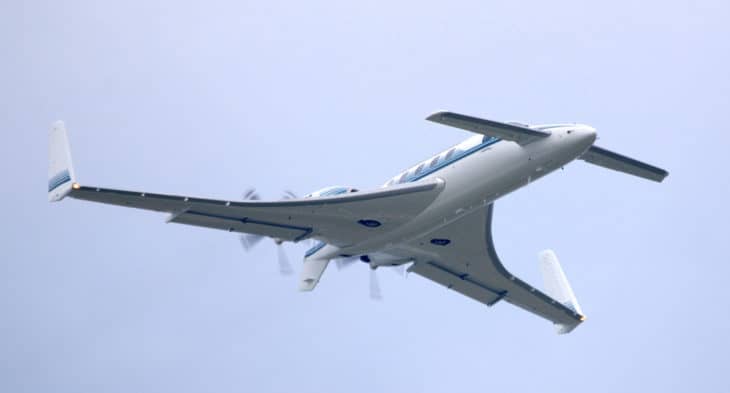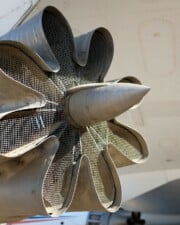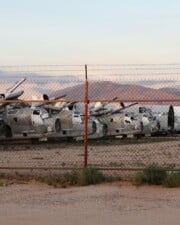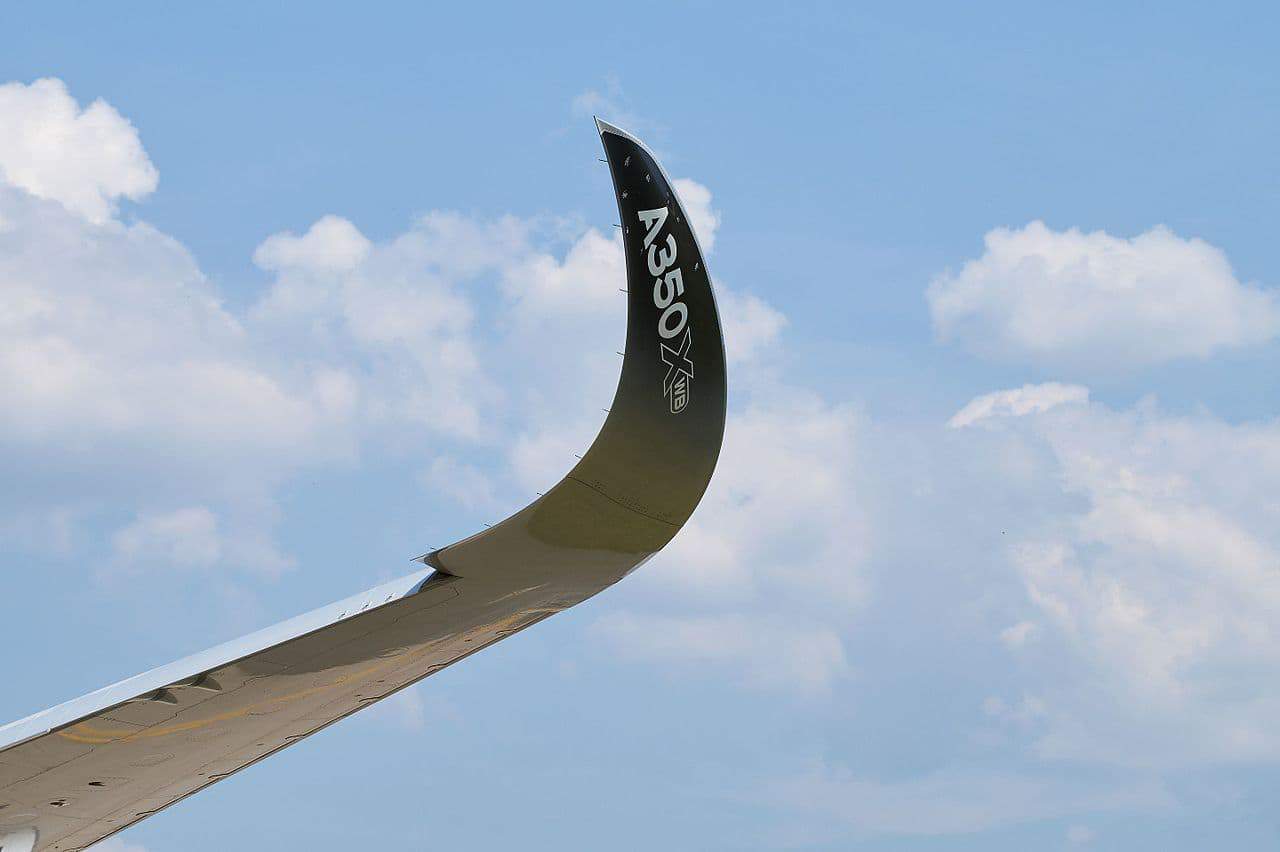Every once in a while, an aircraft catches your eye. Some planes just look different—like they popped in from the future, even. Designers are constantly finding new ways to make airplanes fly better—more efficient or more maneuverable. The canard is one design tool that engineers have played with over the years.
A canard is a lifting surface mounted forward of the wings. A canard isn’t a single thing, though—its use is part of a unique-looking aircraft design. There are a few examples of canard aircraft around, but the most famous is probably the Beechcraft Starship.
The word canard is sometimes used to describe the forward wing (foreplane) and sometimes used to describe the entire class of aircraft design.
What are Canards?
Canards are smaller wings (lift providing horizontal surfaces) mounted forward of the aircraft’s main wings.

Canards aren’t very common. Canards are a complete redesign of the typical airplane rather than the simple addition of another lifting surface. The horizontal stabilizer and elevator, usually mounted on the tail, are moved to the front. This unique airplane design has some incredible advantages and a few disadvantages.
A canard design does not usually have a conventional empennage. Instead, canard airplanes have a large rear wing mounted very far aft instead of typical vertical and horizontal stabilizers, rudders, and elevators.
In fact, it is this design element from which canards take their name. Canard is the French word for duck. It is said that a canard aircraft looks like a duck, flying with its neck outstretched and its wings very far back.
What are Canards For?
Aircraft designers have been tinkering with canards for a long time. In fact, some of the earliest planes like the Wright Flyer and the Santos-Dumont 14-bis were canard designs.
The argument in favor of canards is simple—it’s a more efficient design when compared to traditional airplanes. But some stability problems must be addressed.
Why use Canards?
To understand the benefit of canards, you need to understand how a typical airplane—one with a conventional empennage—remains stable during flight.
Three forces act on a plane and keep it flying. The forces oppose each other—and balance one another—so that the aircraft remains level during flight.
- The CG and weight of the plane (down force)
- The wings produce lift (up force)
- The horizontal stabilizer (down force)
The plane is stable because as weight shifts or changes, the pilot can change the tail-down force made by the horizontal stabilizer to correct for it. So long as the aircraft isn’t overloaded, and the weight is centered forward of the wings, the plane will fly straight and level.
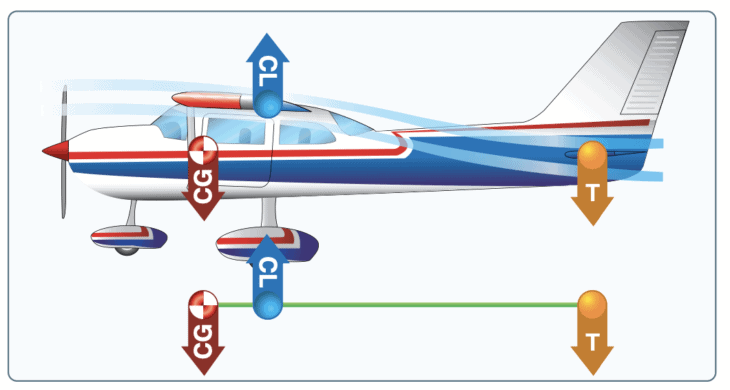
A canard switches this basic equation around and reverses one of the three forces.
- The canard makes some lift (up force)
- The CG and weight of the plane (down force)
- The wings produce lift (up force)
Benefits of Canards
From a designer’s perspective, it takes work to make lift. Using the tail to create a tail-down force is a waste of work and, therefore, a design inefficiency. They can make the plane faster and more efficient by using all the surfaces to make upwards lift.
You see, the wing of a typical aircraft must create enough lift to not only keep the airplane aloft but also to fly the imposed load and the tail-down force. In other words, the more tail-down force that is needed, the more lift the wing must make.
A canard flips this equation on its head. A canard shares the lifting duties with the wing, which means that both surfaces work together to keep the plane aloft.
Drawbacks of Canards
Canard designs are sometimes advertised as “stall proof.” This means that it is tough to stall a well-designed canard design. If airspeed slowed down excessively, the canard would stall first. The nose would drop, airspeed would build back up, and the aircraft would recover.
But in truth, this only works safely if the design can assure that the canard will always be the first to stall. Designers accomplish this by giving the canard very high wing loading.
What would happen if the wing stalled before the canard? The aircraft’s tail would sink, causing the angle of attack to increase rather than decrease. As a result, the stall would deepen and could become unrecoverable. This dire situation would never happen in a conventional aircraft.
Related: What is a high speed stall?
Another problem with canard designs is that they still require a vertical stabilizer and rudder surface. These are often included on the wingtips in the form of very large winglets. This is how the Rutan Long-EZ and VariEze accomplish the task.
But this design has problems too. The wings must have a significant sweepback to get the vertical surfaces far enough behind the CG. That sweepback isn’t great for low-speed flight, which means that the aircraft have higher stalling and approach speeds.
List of Canard Aircraft — 6 Famous Planes with Canard Designs
As novel as the idea might sound, canards have been around since—well, since the beginning! The Wright Flyer and many other early flying machines featured canards—not conventional empennages.
Looking at this handful of canard-designed aircraft gives one an idea not only of what airplanes have canards but also why they are used in certain situations.
1. Wright Flyer
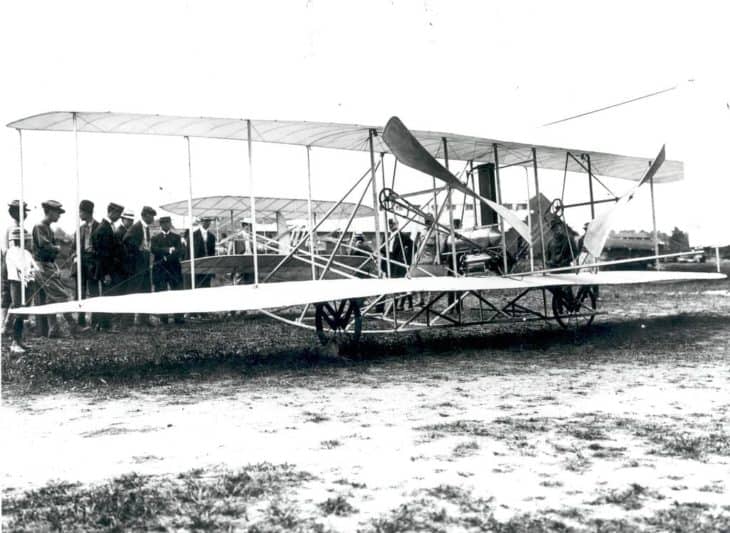
Along with the earlier Wright Glider, the Wright Brothers’ designs featured a canard. The elevator was mounted at the front of the plane, the operator (and weight) on the forward edge of the wing, and the wing aft. The vertical surfaces were mounted farther aft on their own pylons.
2. Rutan Long-EZ and VariEze
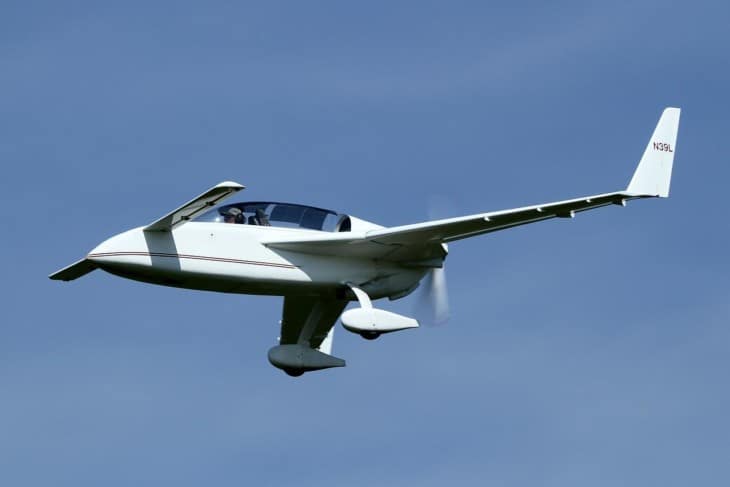
No list of canard aircraft would be complete without mention of the one and only Burt Rutan. Rutan was an Air Force test pilot who later had an illustrious career as an aircraft designer.
For pilots, the most common association with Rutan is the homebuilt kitplanes that made him famous. The distinctive canard-design VariEze and Long-EZ could outperform anything else in the light airplane market at the time. Plus, they were significantly cheaper to buy and own than a Cessna or Piper.
These planes are one of the primary reasons most pilots have seen a canard design. Hundreds are flying all over the world to this day.
3. Beech Starship
Beechcraft tried to take the canard design and go big. The result was a Burt Rutan-designed corporate turboprop dubbed the Starship. Eye-catching on any ramp and with performance to match many corporate jets, the Starship was unique indeed.
Unfortunately, the advanced composites necessary to make the Starship successful on a larger scale were too expensive. The Starship was sadly several decades ahead of its time. In the end, Beech bought back the fleet of airplanes and mothballed them.
How do canards help the Beech Starship? Like other canard designs, the Starship worked because of its fantastic efficiency advantage over conventional airplanes. In addition, the Starship featured variable-geometry canards that could be swept back like the wings of an F-14 Tomcat.
By changing the sweep of the canard, its effectiveness could be changed. This was used to counter the effects of changes on the main wing, like the addition of flaps.
4. Rutan Voyager
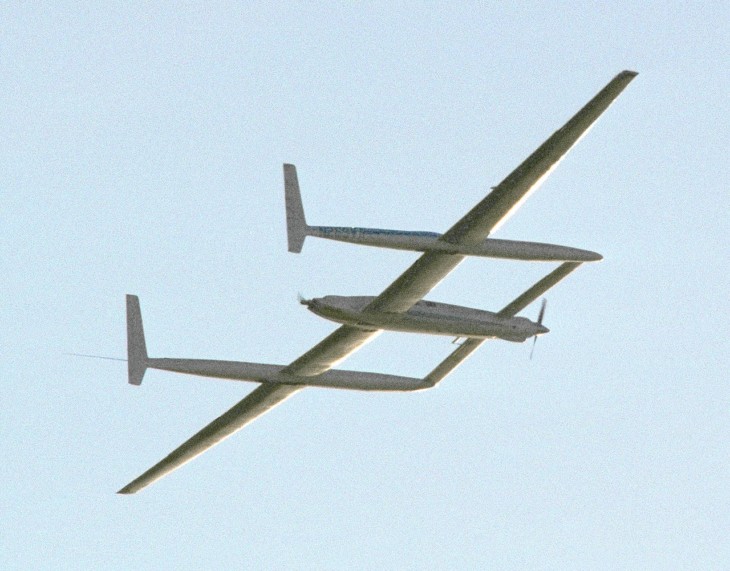
The final most famous Rutan design featuring a canard is the one and only Voyager. The homebuilt single-engine plane set a record in 1986 and won the prestigious Collier Trophy. It was the first plane to fly nonstop around the world without refueling.
The trip took nine days and was piloted by Burt’s brother Dick and Jeana Yeager. Their trip still stands as the longest flight without refueling at 216 hours in length.
The Voyager was purpose-built for the task. Its twin-boom fuselage housed 17 fuel tanks that required the pilots to move fuel around constantly to maintain the proper flight balance. The plane had two engines on the center fuselage—one pusher and one puller. The arrangement allowed them to use the forward engine only for takeoff when the plane was highly loaded.
Among the many features that helped make the plane as efficient as possible were its notable high aspect ratio, low-drag wings, and an equally high aspect canard.
5. Piaggio P.180 Avanti
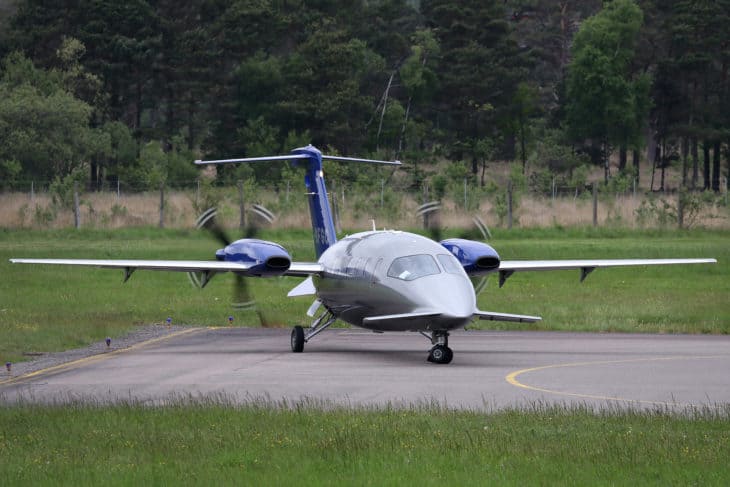
An increasing number of modern aircraft are using a forward-mounted canard wing for a performance boost. Instead of the classic canard design, these airplanes are generally conventional in every other way—they have elevators, horizontal stabilizers, and a standard means of stability.
One notable example is the corporate transport by Piaggio. Everything about the Avanti is unconventional, from its football-shaped lift-producing fuselage to the canard-like structure on its front. Then there are its narrow wings, mounted far aft, with pusher turboprops and a conventional-looking t-tail.
But the canard on the Avanti is not a canard in the true sense. The Avanti’s stability and pitch control come from its conventional horizontal stabilizer and wing. So what is the foreplane for? It is a third lift-producing device. Instead of only using the wing to produce lift, the designers of the Avanti made the whole thing make lift. So a percentage comes from the wing, a percentage from the foreplane, and even some from the fuselage.
The Avanti is known as a three-surface aircraft.
6. Eurofighter Typhoon
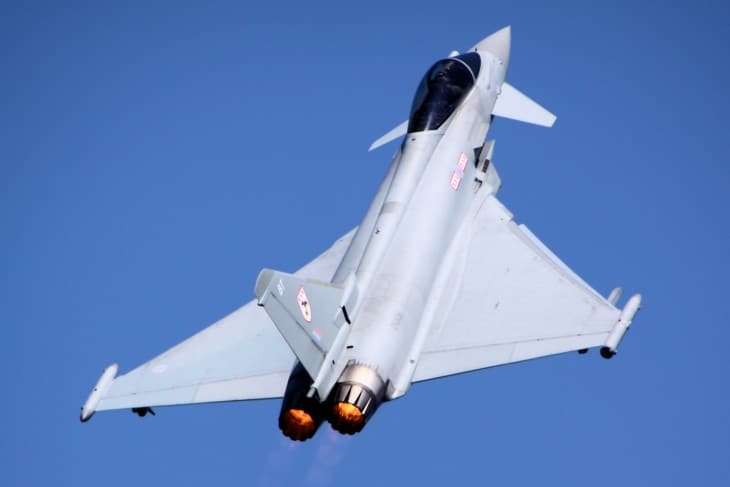
Another example of designers tinkering with the idea of a canard-like foreplane is the Eurofighter Typhoon. There are several other variations of this same design—a delta-wing, high-performance fighters that use a foreplane to increase their performance. This type of canard is called a close coupling foreplane.
The airplane itself is as typical as a delta wing design can be in all other respects. The purpose of the foreplane is to force airflow over the main wings, especially at low speeds. This results in better aerodynamics and maneuverability at all speeds. Of course, advanced aircraft like these benefit from having inherently unstable designs that are kept within limits by computer control systems.
Other examples of delta wing fighters featuring a close coupling foreplane include the Dassault Rafale, Saab Gripen, and Sukhoi Su-33/34.
Related Posts
